Animal Classification Normal Worksheets for Ages 6-8
8 filtered results
-
From - To
Welcome to our "Animal Classification Normal Worksheets for Ages 6-8" page! Designed for young learners, these engaging worksheets help children explore the fascinating world of animals and their classifications. Through fun activities, your child will learn to categorize animals into groups such as mammals, birds, reptiles, amphibians, and fish, enhancing their understanding of biodiversity. Each worksheet promotes critical thinking and reinforces essential skills in a playful manner. Perfect for homeschooling or classroom use, these resources make learning enjoyable and interactive. Start your child's journey into the animal kingdom today and watch their curiosity flourish!
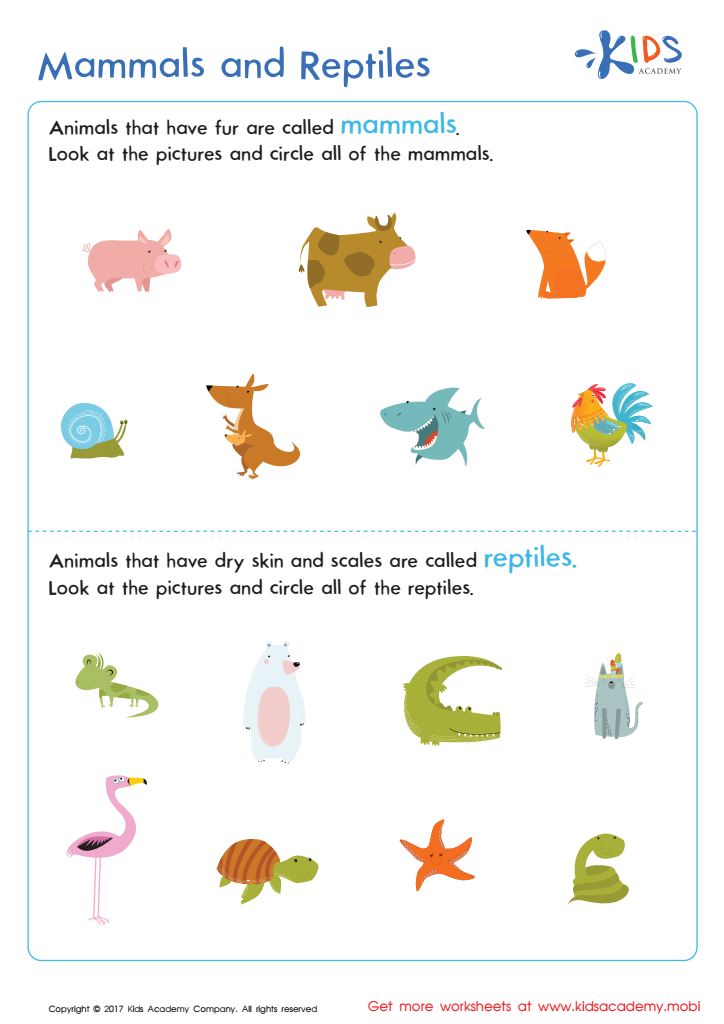

Mammals and Reptiles Worksheet
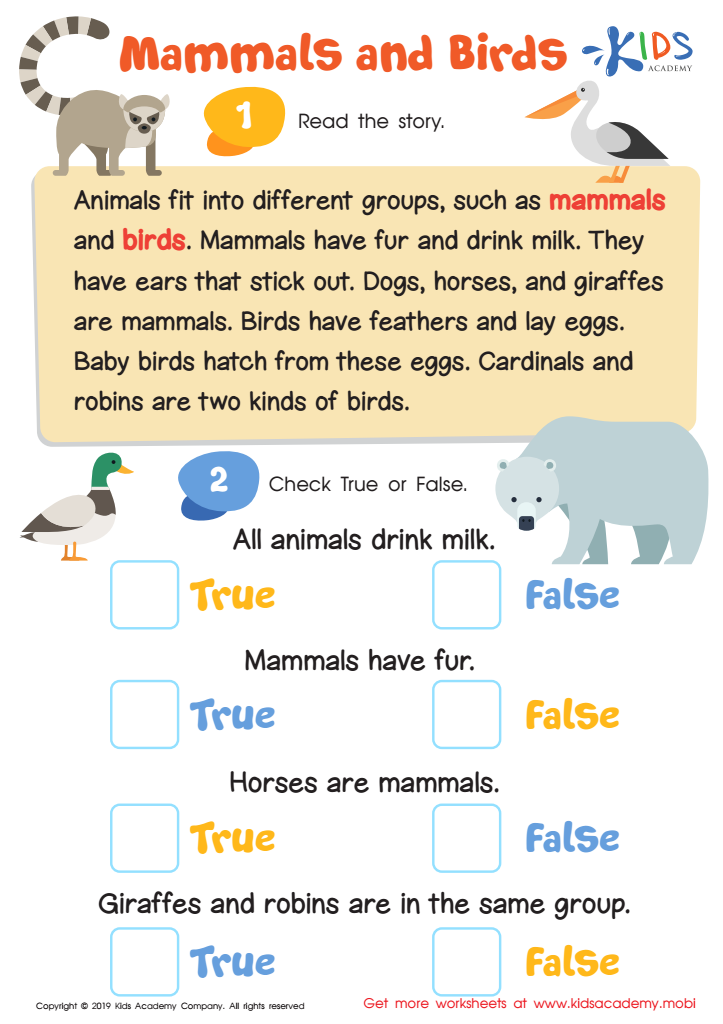

Mammals and Birds Worksheet
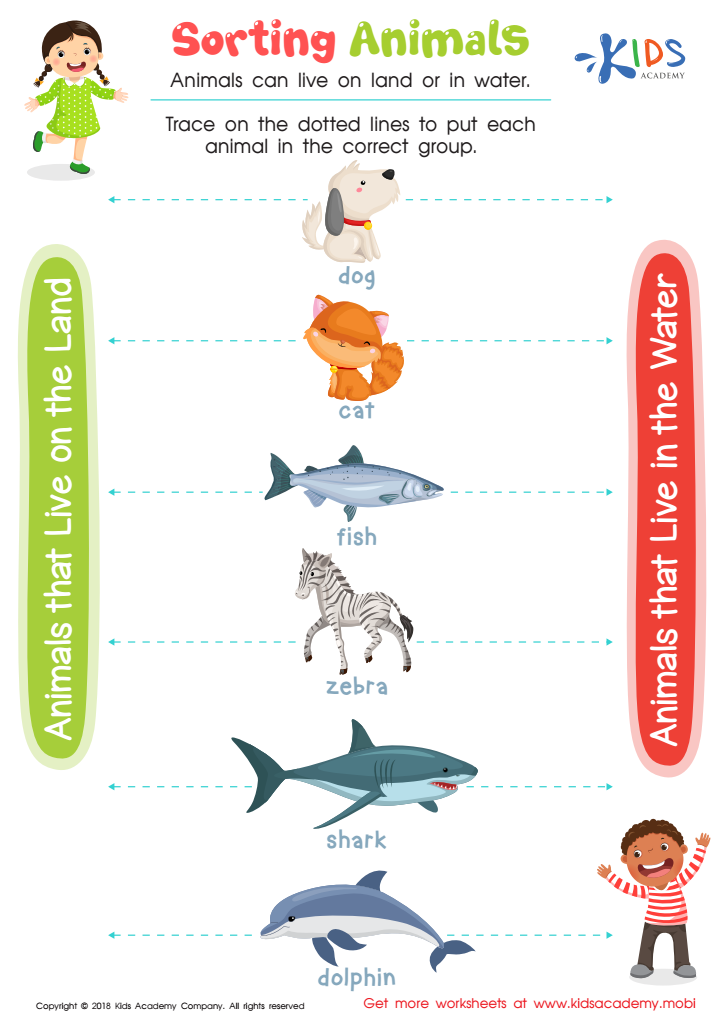

Sorting Animals Worksheet
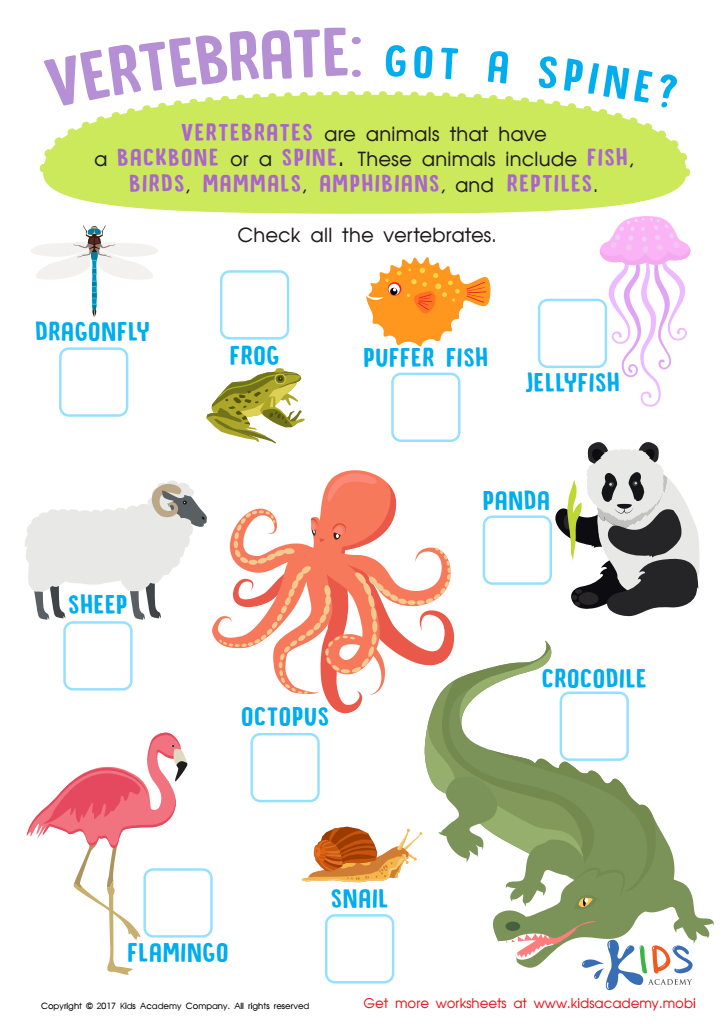

Vertebrates Animals Worksheet for 3rd Grade
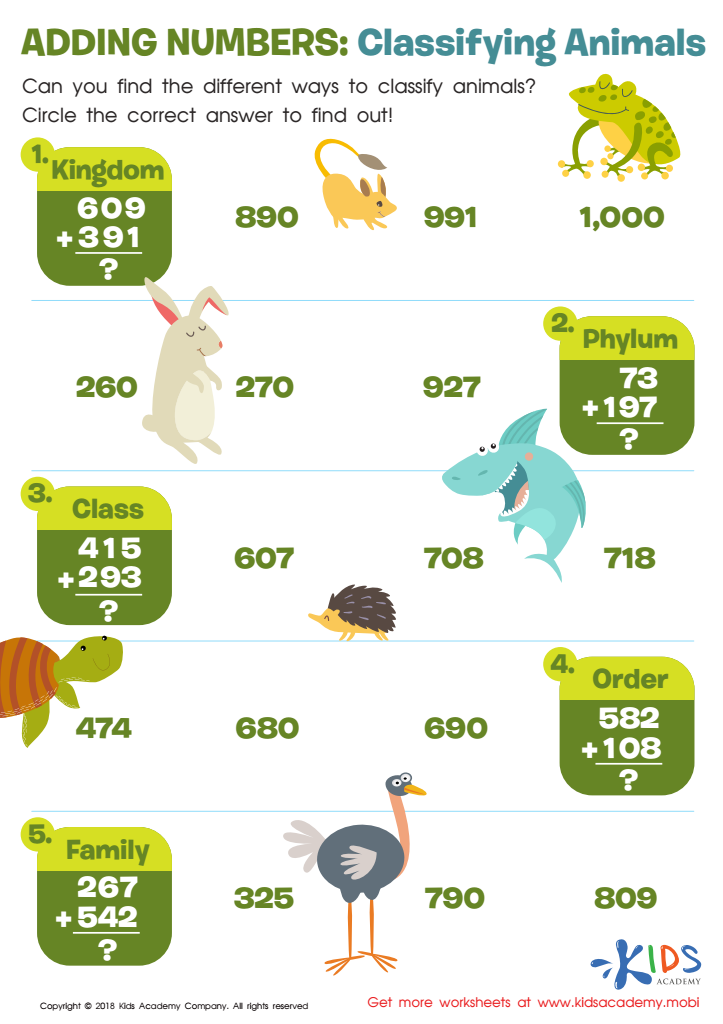

Adding Numbers: Classifying Animals Worksheet
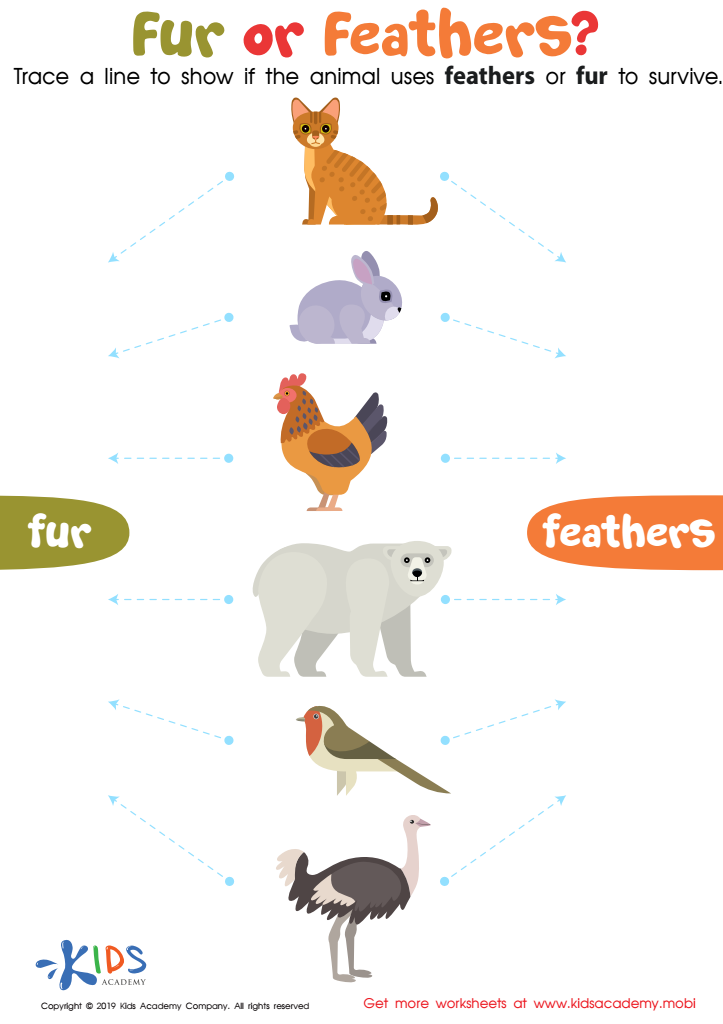

Fur or Feathers? Worksheet
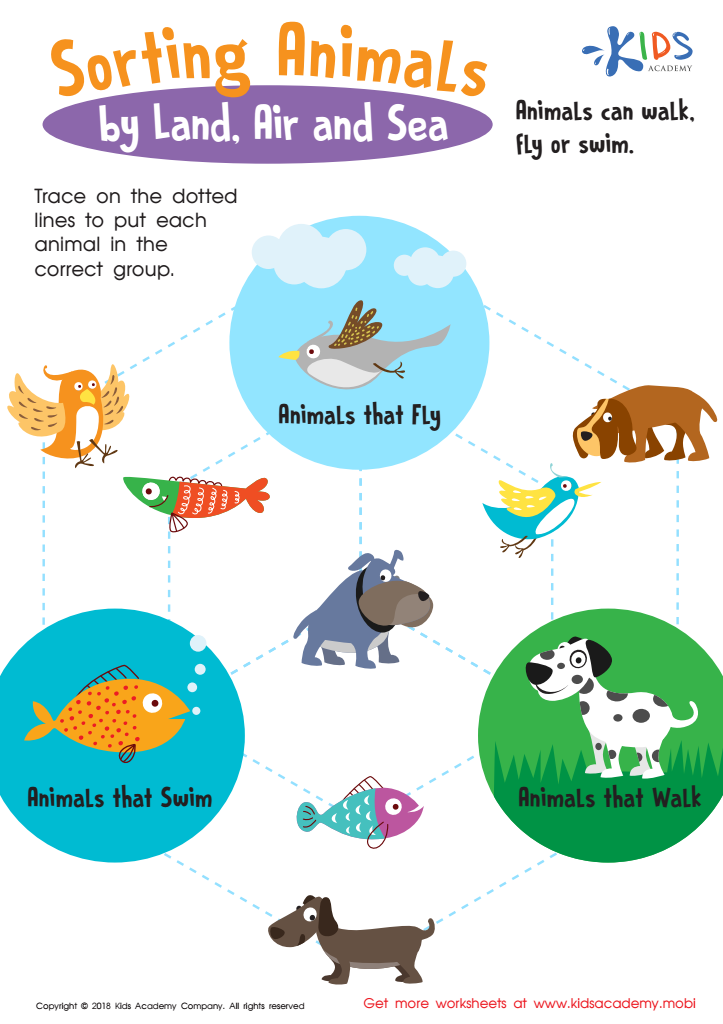

Sorting Animals by Land, Air and Sea Worksheet
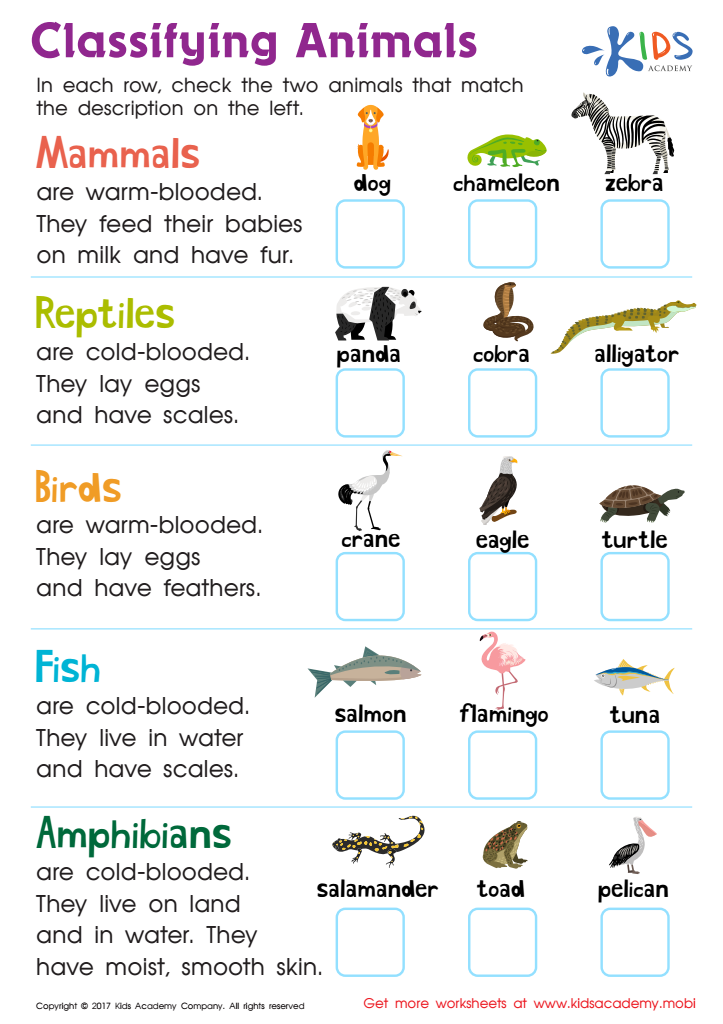

Classifying Animals Worksheet
Animal classification is a fundamental concept that introduces children aged 6 to 8 years old to the diversity of life on Earth. Parents and teachers should care about teaching this subject because it fosters curiosity about nature and promotes scientific thinking. By learning how animals are classified into groups such as mammals, birds, reptiles, amphibians, and fish, children develop a better understanding of ecosystems and the interconnectedness of all living beings.
Teaching animal classification also enhances observational skills. Children begin to notice similarities and differences among animals, which is critical for developing critical thinking skills. Early exposure to this subject can spark an interest in biology and biodiversity, possibly inspiring future careers in science and environmental conservation.
Moreover, understanding animal classification encourages empathy towards animals and the environment. When children learn about different species and their habitats, they are more likely to appreciate their importance and contribute to their conservation.
By prioritizing animal classification in education, parents and teachers not only enrich children's knowledge but also instill a sense of responsibility toward protecting our planet's fragile ecosystems. This creates informed, conscious individuals who are equipped to make positive contributions to their communities and the world.

 Assign to My Students
Assign to My Students




















